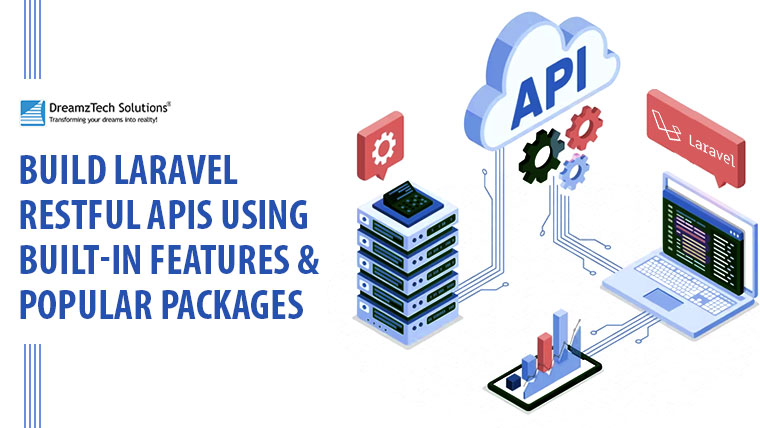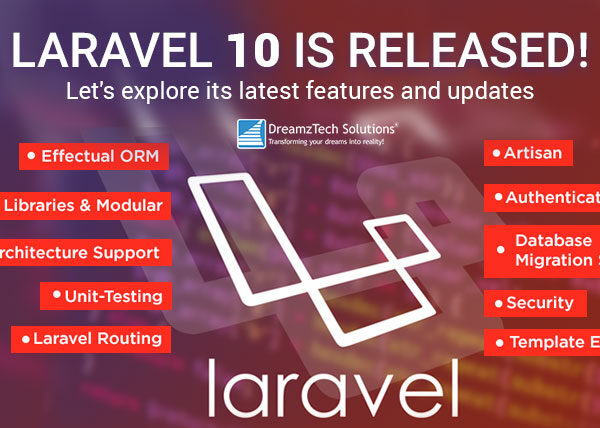Creating robust and scalable APIs is essential for building modern web applications, and Laravel is a popular PHP framework that offers powerful features and packages to make API development a breeze. In this article, we’ll explore how to create robust and scalable APIs using Laravel’s built-in features and popular packages. We’ll cover topics such as setting up a Laravel project, configuring the database, defining API routes, creating controllers, using middleware, and leveraging popular packages such as Laravel Sanctum. We’ll also discuss the best practices for versioning your APIs to ensure backward compatibility. By the end of this article, you’ll have a solid understanding of how to build Laravel Restful APIs that are robust and scalable in nature and power modern web applications.
- Setup Laravel: The first step is to set up a new Laravel project. You can use the following command to create a new Laravel project:
lua:
composer create-project --prefer-dist laravel/laravel my-app
- Configure the database: Laravel comes with a built-in ORM called Eloquent, which allows you to work with databases using PHP syntax. You can configure your database connection in the
.envfile. You can also create database migrations using the following command:
go:
php artisan make:migration create_users_table
- Define API routes: Laravel’s built-in
Routeclass allows you to define your API routes. You can create a new route using the following code:
php:
Route::get('/users', 'UserController@index');
- Create a controller: A controller is responsible for handling HTTP requests and returning responses. You can create a new controller using the following command:
go:
php artisan make:controller UserController
In your controller, you can define methods to handle API requests and responses. For example:
php:
class UserController extends Controller
{
public function index()
{
$users = User::all();
return response()->json($users);
}
}
- Use middleware: Middleware allows you to perform actions before or after API requests are handled by controllers. For example, you can use the
authmiddleware to require authentication for certain API routes. You can define middleware in theapp/Http/Kernel.phpfile and apply it to your API routes. For example:
php:
Route::middleware('auth')->group(function () {
Route::get('/users', 'UserController@index');
});
- Use popular packages: Laravel also has a range of popular packages that can be used to create robust and scalable APIs. For example, you can use the
Laravel Sanctumpackage to authenticate users and protect your API routes. You can install the package using the following command:
bash:
composer require laravel/sanctum
Then, you can add the Sanctum middleware to your API routes:
php:
Route::middleware('auth:sanctum')->group(function () {
Route::get('/users', 'UserController@index');
});
- Version your APIs: As your API evolves over time, you may need to make changes to existing endpoints or add new ones. To prevent breaking existing client applications, it is a good practice to version your APIs. You can create a new version of your API by duplicating your existing API routes and controllers and adding a version prefix to the URLs. For example:
php:
Route::prefix('v1')->group(function () {
Route::get('/users', 'V1\UserController@index');
});
Route::prefix('v2')->group(function () {
Route::get('/users', 'V2\UserController@index');
});
That’s it! By following these steps you can build Laravel Restful APIs using Laravel’s built-in features and popular packages that power modern web applications.

Let’s explore some examples of integrating Laravel with RESTful APIs
- Integration with Stripe API: Stripe is a popular payment gateway that provides an API for integrating with web applications. You can use Laravel’s built-in HTTP client to make requests to the Stripe API and process payment transactions. You can also use Laravel’s event system to handle various payment-related events such as successful payments, failed payments, and refunds.
- Integration with Mailchimp API: Mailchimp is a popular email marketing platform that provides an API for integrating with web applications. You can use Laravel’s HTTP client to make requests to the Mailchimp API and manage email marketing campaigns. You can also use Laravel’s queue system to schedule email marketing campaigns for delivery at a later time.
- Integration with Google Maps API: Google Maps is a popular mapping service that provides an API for integrating with web applications. You can use Laravel’s HTTP client to make requests to the Google Maps API and display maps and directions on your web application. You can also use Laravel’s caching system to cache map data and reduce the number of API requests.
- Integration with GitHub API: GitHub is a popular code hosting platform that provides an API for integrating with web applications. You can use Laravel’s HTTP client to make requests to the GitHub API and perform various actions such as creating and deleting repositories, managing issues, and pulling code changes.
- Integration with Twilio API: Twilio is a popular cloud communication platform that provides an API for integrating with web applications. You can use Laravel’s HTTP client to make requests to the Twilio API and send text messages, make voice calls, and perform other communication-related actions.
These are just a few examples of how you can integrate Laravel with RESTful APIs. Laravel provides a flexible and powerful framework to the laravel developer for building RESTful APIs that can integrate with a wide range of APIs and services. By leveraging Laravel’s built-in tools and packages, you can easily create robust and scalable APIs that power modern web applications.
DreamzTech Solutions is a leading Laravel Development Company in USA with development offices in USA, UK & India. Hire Laravel Developer from our 250+ Development Team and Create your web application result-oriented, scalable, robust, secure.



